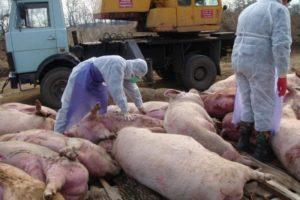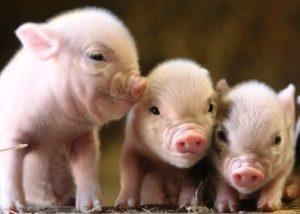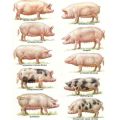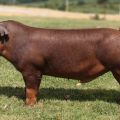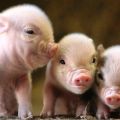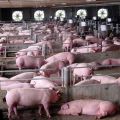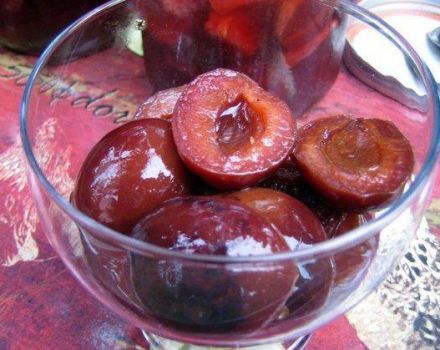Description and characteristics of Landrace pigs, conditions of detention and breeding
Denmark is a leader in the introduction of new technologies in pig production. The profitability of farms depends on the quality of the breeding material; there are more than 250 breeding centers in the country. Work to improve the elite breed of Landrace pigs does not stop.
History of appearance
Pig breeders from other countries learned about a promising meat breed bred in Denmark at the turn of the 19th and 20th centuries. The Landrace owes its genetics to European fold-eared pigs and boars and sows of the Berkshire breed imported from England. Many years of breeding work gave a remarkable result. From the crossing of local and English breeds in Denmark, bacon pigs appeared, rapidly gaining muscle mass, accumulating a small amount of fat.
Breeding animals were brought to Russia in 1948. Two domestic enterprises were engaged in acclimatization and breeding of a new meat breed:
- Kaluga Region - the Tsvetkov breeding farm;
- Novgorod region - breeding plant "Krasny Bor".
It took over 40 years to adapt to local breeding conditions. In 1993, the Landrace breed was entered into the State Register. Pigs of the Landrace breed are raised by farmers, owners of personal subsidiary plots in all regions of Russia. There are Danish purebred pigs in New Zealand, Australia, they are bred in Ukraine.
Characteristics and description of the Landrace pig
Landrace piglets cost 4-6.5 thousand rubles and are in stable demand. From the table, which indicates the weight of the pigs by month, it can be seen that already at the age of 9-10 months the live weight exceeds 100 kg.
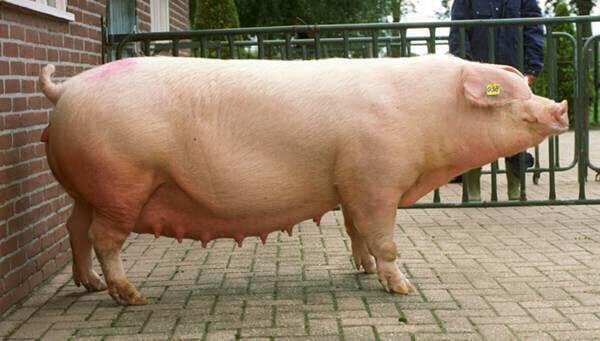
| Piglet age in months | Daily gain (g) | Body weight (kg) |
| 2 | 200-250 | 15-25 |
| 3 | 250-300 | 25-35 |
| 4 | 400-500 | 35-45 |
| 5 | 45-60 | |
| 6 | 500-550 | 60-75 |
| 7 | 75-90 | |
| 8 | 90-105 | |
| 9 | 105-120 | |
| 10 | 120-130 |
Such results are achieved if the menu includes concentrated vitamin and mineral supplements. It takes 250 kg to feed one Landrace pig per year. Below is a table of the daily feed requirements of pigs. External characteristics of the breed:
- whitish bristles, not thick;
- the skin is white-pink, sometimes with black spots;
- the body is elongated, torpedo-shaped, 2 m long for boars, 1.6 m for sows;
- boar breast volume 1.9 m, sow - 1.5 m;
- the neck is fleshy;
- hams pronounced, wide;
- medium-sized head;
- ears are large, wide, hanging over the eyes.

Pigs are not prone to aggression, are mobile. The animals, despite their great weight, easily move on short, straight legs. The average weight of an adult boar is 300 kg, of a sow - 250 kg.
Pros and cons
Choosing piglets for personal subsidiary plots, farms, livestock breeders evaluate the advantages and disadvantages of the breed.
| Advantages of Landrace pigs | Disadvantages of Landrace pigs |
| Gain weight quickly | Are prone to stress |
| There are a lot of piglets in the litter | Weak hind legs |
| They quickly adapt to weather changes | Demanding conditions of detention |
| Active | They are picky about food |
| Early ripening | |
| They are distinguished by high productivity |
Care features
Raising Landrace pigs is beneficial if the diet is properly formulated. In this case, the food is used to build up meat, not fat. A good effect is achieved when using juicy feed (pumpkin, potatoes, rutabaga, carrots) and protein sources (alfalfa, clover).
Conditions of detention
Pigs of the Landrace breed are adapted to the Russian climate, so the pigsties do not insulate for the winter. In the cold season, Canadian technology is used. Animals are kept on a deep permanent bedding (straw, sawdust).
The heat that is released when the lower layers are overheated warms the animals. The temperature in the depth of the litter reaches 40 ° C, in the pigsty it does not drop below 5 ° C. Litter organic matter is treated with biological products. They activate the activity of bacteria, destroy the smell of ammonia, and process pork excrement.
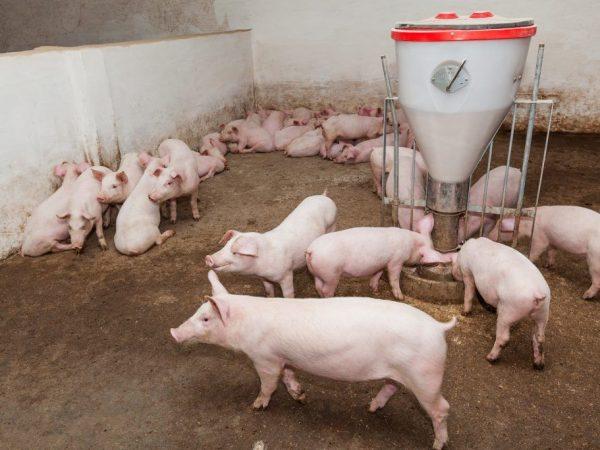
| Age, gender | Boar producer | Sow | Weaning | Fattening pig |
| Area for 1 individual | 10 m² | 7 m² | 0.8 m² | 1.5 m² |
How is mating done
The boar of the inseminator is selected in advance, kept in comfortable conditions, and provided regular, long walking. An adult manufacturer is taken to mate no more than 30 times a year, a young one 2 times less often. Frequent use of boars degrades the quality of the seed.
The female's body is ready for fertilization within 2-3 days, she is also prepared in advance, given feed containing vitamins, minerals, protein. The male during the sexual hunt is launched to her twice with an interval of 12 hours. The breeder controls the entire mating process in order to stop possible manifestations of aggression in time.
After successful fertilization, the female behaves calmly, does not go on a spree, 115 days after mating, farrowing occurs. Landrace pigs are raised on an industrial scale, crossing with other breeds, and in private farms.
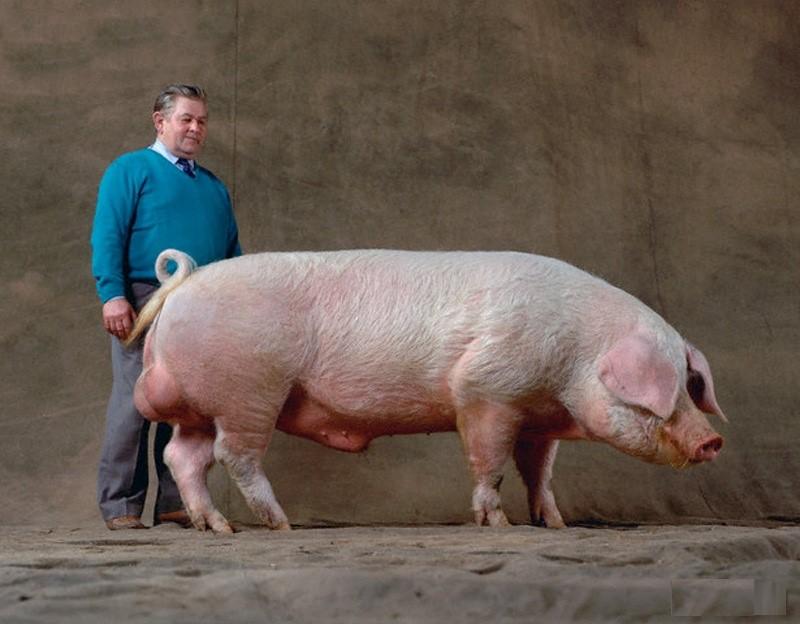
How to care for piglets
The weight of newborn piglets of the Landrace breed is 1.5-2 kg. Leaving them is not easy. Pedigree offspring make high demands on the quality of the diet and conditions of keeping. Immediately after birth, the piglets are wiped dry with a rag, the umbilical cord is removed, the wound is treated with iodine, and placed on a clean bedding. An hour later, the piglets are brought to the mother's nipples, the weakened ones - to the front ones, those that are larger - to the back ones. Colostrum strengthens the immunity of newborn piglets.
Landrace sows often show aggression towards offspring, so they are kept in a separate pen or separated from newborns by a partition.
For the first 7 days in the stall, the air temperature is maintained at 30-32 ° C, then it begins to gradually decrease. Every 5th day, decrease by 2 ° C. At the time of weaning of piglets, the temperature in the shed does not exceed 18 ° C. For the first week, the suckers feed on breast milk, then they are fed 4 times a day with warm (37 ° C) cow's milk. A single dose of 10-15 g. Starting from the 3rd day of life, suckers are given a 0.25% solution of ferrous sulfate. This serves to prevent anemia. Water is introduced into the diet on the 4th day, fried grain - on the 10th day.

Diet of fattening Landrace piglets:
- compound feed;
- porridge on skim milk;
- summer grass;
- winter carrots;
- fish fat;
- milk.
Suckers are weaned from the sow at the age of 30-45 days. Piglets are fed 4 times a day, gradually injected into the diet return, meal, cake, fish, meat waste.
Feeding at home
At home, bacon pigs are fed with compound feed, herbs, vegetables, and mineral supplements are added to the diet.During the first fattening period (it lasts 4.5-5 months), the average daily weight gain of 450 g is considered the norm. In the second fattening period, the average daily weight gain is 600 g. , fish waste, soybeans, oats). To improve the quality of the bacon, the pig is fed a mixture.

| Blend Ingredient | % |
| Barley | 70 |
| Legumes | 20 |
| Wheat bran | 10 |
946 g of this mixture is equivalent to 1 feed unit. In the second feeding period, the time for walking the pigs is reduced. In winter, they organize 3 meals a day with 8-hour breaks, during the warm period the animals are fed 2 times a day.
| Live weight | 20 kg | 30 Kg | 40 Kg | 50 Kg | 60 Kg | 70 kg | 80 Kg | 90 kg |
| Number of feed units | 1,5 | 1,8 | 2,3 | 2,6 | 2,8 | 3,3 | 3,5 | 3,7 |
| Daily gain | 400 g | 400 g | 500 g | 500 g | 600 g | 700 g | 700 g | 700 g |
Possible diseases and their prevention
In pigsties, disinfection is carried out 2-4 times a year. One procedure lasts from 3 to 5 days. Spore-forming microorganisms are destroyed with solutions of active chlorine (5%) or formaldehyde (4%). For an area of 1 m², 3 liters of disinfectant are consumed.
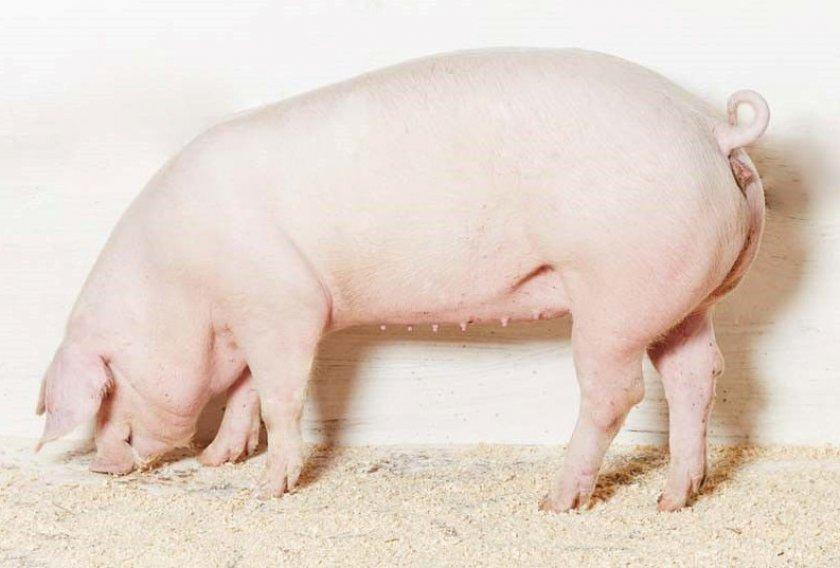
Common diseases of Landrace pigs:
- scabies;
- erysipelas;
- ringworm;
- plague;
- cysticercosis;
- dysentery.
Sick animals are isolated, treatment is carried out under the supervision of a veterinarian. The infection is carried by rats, mice, insects. Infection carriers are fought in two ways:
- deratization is carried out from rodents, mice and rats are poisoned with poisons (monofluorin, bactocoumarin, zinc phosphide);
- from flies, ticks, lice, fleas, pigs are rescued using pest control, the pigsty is sprayed with chlorophos.
To prevent disease, piglets are vaccinated. The first vaccinations against colibacillosis, salmonellosis are given on the 3rd day. At the age of 1.5 months, they are vaccinated against leptosporiasis. Piglets are vaccinated against this disease twice at weekly intervals. The vaccine against erysipelas is given to piglets at 2 months of age, and against plague at 3 months. Vitamins are prescribed to pigs in the first week of life.
